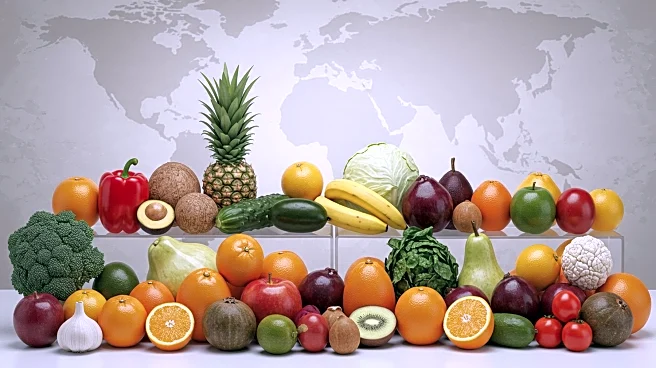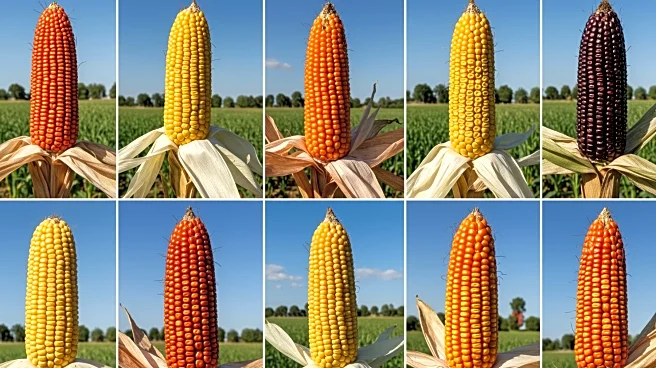What's Happening?
The U.S. Department of Agriculture (USDA) has reported a slight decline in the condition of corn and soybean crops, with 72% of the corn crop and 68% of soybeans rated as good or excellent. This marks a 1% decrease from the previous week but remains ahead of last year's figures. The Midwest's favorable weather conditions have contributed to the overall health of crops, with less than 2% of the region experiencing drought. Wheat futures have faced pressure as the spring harvest progresses, with 16% of the crop collected last week. The USDA is expected to update its weekly crop progress report, which will provide further insights into the current state of U.S. agriculture.
Why It's Important?
The condition of corn and soybean crops is crucial for the U.S. agricultural sector, impacting commodity prices and farmer incomes. The slight decline in crop ratings may influence market dynamics, as investors adjust their positions based on USDA reports. Favorable weather conditions in the Midwest are mitigating drought impacts, which is beneficial for crop yields. However, the pressure on wheat futures indicates potential challenges in the grain market. These developments are significant for stakeholders, including farmers, investors, and policymakers, as they navigate the complexities of agricultural production and market fluctuations.
What's Next?
The USDA's upcoming crop progress report will provide updated data on crop conditions, influencing market expectations and investment strategies. Stakeholders will closely monitor weather patterns and their impact on crop health, as well as any changes in commodity prices. Farmers may need to adjust their strategies based on the report's findings, while investors will reassess their positions in futures markets. The agricultural sector will continue to adapt to evolving conditions, with potential implications for supply chains and food prices.












